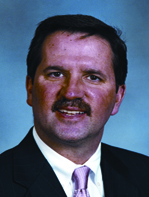BLOG: A teenage patient with a concurrent meniscal injury with ACL tear
Meniscal tears frequently occur concomitantly with acute and chronic ACL tears. The reported incidence of concurrent ACL and meniscal tears have ranged from 16% to 82% in acute ACL tears and up to 96% in chronic ACL tears. In acute ACL tears, the lateral meniscus is more often injured while the medial meniscus is more commonly injured in chronic tears.
BLOG: Hardware complications in revision ACL reconstruction take careful consideration
Anterior cruciate ligament reconstruction is a commonly performed orthopedic procedure with more than 100,000 reconstructions performed annually in the United States. Despite improved surgical techniques and rehabilitation protocols, anterior cruciate ligament reconstruction failure rates range from 5% to 25%.
BLOG: Treatment options for patients with open growth plates and ACL tears
Children and adolescents continue to sustain disruptions of the ACL prior to physeal closure, which poses different challenges for reconstruction than for patients with closed physes. We discuss current options for the treatment of an ACL tear in a population with open growth plates.
BLOG: We present the uncommon case of an atraumatic rotator cuff tear in a young patient
Atraumatic rotator cuff tear is an uncommon entity in young patients. There are few clinical studies available in the English literature to guide treatment. Payne and colleagues reported on 29 patients with atraumatic rotator cuff tears. All patients were overhead throwing athletes who had insidious unset of pain and weakness.
BLOG: Treatment and diagnosis of SLAP tears can sometimes prove difficult
Operative treatment of type I (superior labral anterior to posterior) SLAP tears is usually debridement. Treatment of type II SLAP tears is still somewhat controversial, especially in the overhead throwing athlete and older patient. Recent literature reports better outcomes with biceps tenodesis or tenotomy in patients older than 40 years and for some overhead athletes; although there are studies that show repair has success rates comparable to tenodesis in older individuals.
BLOG: Arthroscopic suture fixation of a tibial spine avulsion in a pediatric patient
Tibial spine (intercondylar eminence) fractures occur most frequently in the pediatric and early adolescent age groups. In the pediatric population with open physes, this fracture is the equivalent of an ACL tear with the injury occurring at the relatively weak, incompletely ossified tibial epiphysis. This type of injury can occur from direct trauma associated with falls and accidents, as well as from indirect trauma involving non-contact deceleration injury mechanisms in sports.
Stay out of trouble with shoulder stabilization: Don’t miss the HAGL
Anterior capsulolabral injury (Bankart lesion) is a common cause of anterior shoulder instability that is frequently treated with excellent outcomes. However, it is important not to miss associated pathology. Humeral avulsion of the glenohumeral ligament (HAGL), occurring in combination with a Bankart lesion, can present with similar findings to an isolated Bankart lesion, but if not recognized and treated will lead to recurrent instability.
Should we fix grade III AC joint injuries in athletes?
The acromioclavicular joint is a commonly injured joint in sports. Injury typically occurs from direct impact from a collision as in football or hockey or from a fall onto the shoulder with the arm adducted, which is a common occurrence in many recreational sports.
In-season anterior shoulder instability: What is the risk in returning to play?
Shoulder instability is a common injury in contact and collision athletes. While the acute management is relatively straight forward, the controversy arises when considering the risks associated with return to play in athletes.
ACL and medial-sided injuries: When should we fix the medial side?
ACL and medial collateral ligament injuries are a relatively common injury we see with contact and collision sports. However, objective completely defined criteria for fixing the medial side in addition to the ACL remain controversial and not set in stone.
Read more about





